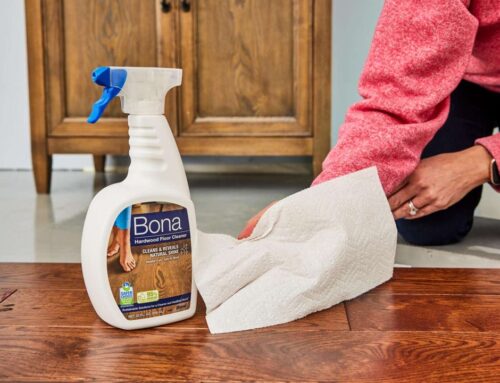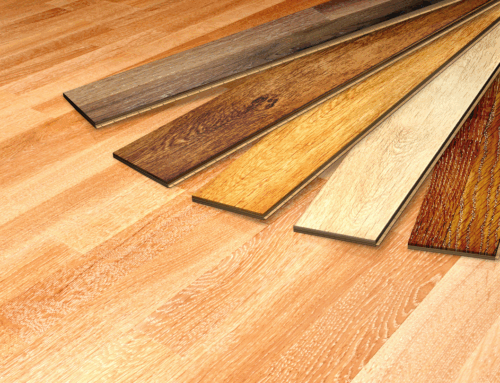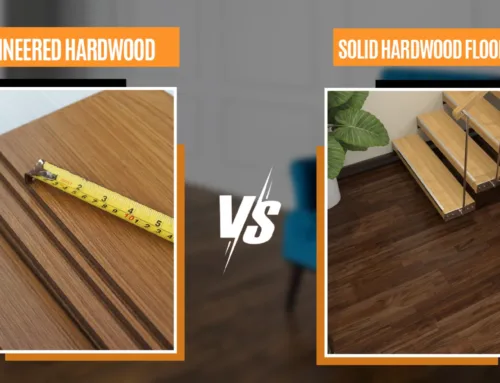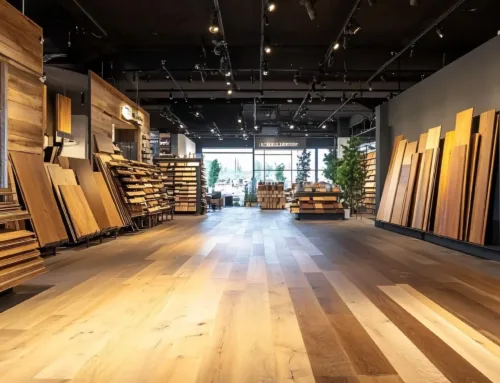Hardwood floors remain America’s most popular flooring choice, appearing in 52% of homes according to the National Wood Flooring Association.
The decision between prefinished hardwood vs unfinished hardwood significantly impacts your renovation timeline, budget, and final appearance.
Understanding these differences helps homeowners make informed decisions based on their specific needs. Cost considerations, customization requirements, installation preferences, and long-term durability all play crucial roles in selecting the right flooring type.
Wondering which hardwood option fits your lifestyle best?
Choosing between prefinished and unfinished hardwood doesn’t have to be overwhelming. At Rustic Wood Floor Supply, our flooring experts provide honest guidance on prefinished convenience versus unfinished customization, helping you make the perfect choice for your lifestyle and budget.
[Get Your Free Consultation: (678) 691-0533 ]
What Are Prefinished Hardwood Floors?
Prefinished hardwood floors are factory-sanded, stained, and sealed planks that arrive ready for installation. These boards receive professional finishing in controlled factory environments using advanced equipment and curing systems.
The installation process involves direct placement without post-installation finishing work. Professional installers position the planks, secure them properly, and your floors are immediately ready for use.
Common factory finishes include:
- Aluminum oxide coatings for maximum durability
- Multiple polyurethane layers for scratch resistance
- UV-cured finishes that harden instantly under specialized lights
- Ceramic-enhanced topcoats for commercial-grade protection
Factory finishing ensures consistent quality across every plank. Controlled environments eliminate dust, humidity variations, and application inconsistencies that can occur during on-site finishing processes.
Insider Tip:
Look for prefinished floors with aluminum oxide finishes, as they’re 3x more durable than standard polyurethane and resist scratches from pets and furniture better than any on-site finish!
What Are Unfinished Hardwood Floors?
Unfinished hardwood floors are raw wood planks requiring on-site sanding and finishing after installation. These boards arrive without stain, sealer, or protective coatings applied.
The installation process involves placing raw planks first, followed by professional sanding, staining, and sealing. This multi-step approach typically takes 5-7 days from start to finish.
Customization flexibility includes:
- Unlimited stain color options matching any décor
- Custom sheen levels from matte to high gloss
- Specialty textures like hand-scraped or wire-brushed effects
- Blended stain combinations for unique appearances
On-site finishing allows complete customization control. Homeowners can match existing woodwork, create custom color schemes, or achieve specific aesthetic goals impossible with factory-finished products.
5 Key Differences Between Prefinished and Unfinished Hardwood
Understanding these fundamental differences helps determine which flooring option meets your project requirements and lifestyle preferences.
1. Installation Process
(Factory-Ready vs. On-Site Finishing)
Prefinished hardwood arrives completely finished from the factory, ready for immediate installation and use. The streamlined process eliminates on-site finishing work, dust, and extended timelines.
Unfinished hardwood requires complete on-site finishing after installation. This multi-step process involves sanding, staining, and sealing, creating a longer timeline but allowing unlimited customization possibilities.
2. Customization Options
(Limited Selection vs. Unlimited Flexibility)
Prefinished floors offer predetermined color and finish combinations set by manufacturers. While quality remains consistent, design options are restricted to available factory selections.
Unfinished floors provide complete customization control over stain colors, sheen levels, and texture treatments. Homeowners can achieve exact color matches and unique appearances impossible with factory-finished products.
3. Timeline and Convenience
(Immediate Use vs. Extended Process)
Prefinished installation completes in 1-3 days with immediate occupancy. No waiting periods, dust generation, or chemical odors disrupt household routines.
Unfinished floors require 5-7 days total, including installation, finishing, and curing time. The extended process creates temporary living disruptions but delivers superior customization results.
See the difference quality makes in real homes.
Rustic Wood Floor Supply’s inspiration gallery features stunning hardwood installations and beautiful stain options. Browse our collection to discover your perfect wood species and finish combination!
[See Our Wholesale Flooring Collection]
4. Long-Term Maintenance
(Durable Factory Finish vs. Flexible Refinishing)
Prefinished floors feature industrial-grade finishes that resist daily wear exceptionally well. However, refinishing requires complete factory finish removal, making the process more complex and expensive.
Unfinished floors accept multiple refinishing cycles easily throughout their lifespan. Simple sanding and refinishing processes allow color changes and surface renewal every 7-10 years.
5. Cost Structure
(Higher Materials vs. Higher Labor)
Prefinished hardwood costs more per square foot for materials but requires minimal labor investment. Total project costs include materials and basic installation only.
Unfinished hardwood offers lower material costs but requires significant finishing labor investment. Professional on-site finishing adds $3-8 per square foot to total project expenses.
Comparison Table: Prefinished Hardwood vs Unfinished Hardwood
The table below summarizes the key differences between prefinished hardwood and unfinished hardwood to help you quickly compare both flooring options:
| Aspect | Prefinished Hardwood | Unfinished Hardwood |
| Installation Time | 1-3 days, immediate use | 5-7 days, including finishing |
| Customization | Limited factory options | Unlimited color and finish choices |
| Initial Cost | Higher materials, lower labor | Lower materials, higher labor |
| Dust and Disruption | Minimal mess during install | Significant dust from sanding |
| Durability | Industrial-grade factory finish | Custom on-site finish application |
| Refinishing | Complex factory finish removal | Easy sanding and refinishing |
| Surface Appearance | Slight beveled edges b/w planks | Perfectly smooth, seamless surface |
Pros and Cons of Prefinished Hardwood Floors
Prefinished floors offer distinct advantages for specific renovation situations while presenting certain limitations that may not suit every project.
Advantages of Prefinished Hardwood Floors
- A faster installation timeline makes prefinished floors ideal for occupied homes or tight renovation schedules. Professional installation typically completes in 1-2 days with no additional waiting periods.
- Minimal dust and disruption benefits families with children, elderly residents, or allergies. Factory finishing eliminates on-site sanding dust, chemical odors, and extended construction periods.
- Durable factory finishes resist daily wear better than most on-site applications. Industrial curing processes create harder, more scratch-resistant surfaces that maintain their appearance longer.
Limitations of Prefinished Hardwood Floors
- Limited customization options restrict design flexibility. Available colors and finishes may not match existing décor or achieve specific aesthetic goals.
- Visible seams and beveled edges create slight gaps between planks that can trap dirt and make cleaning more challenging than smooth, unfinished surfaces.
- The difficult refinishing process requires complete removal of factory finishes before new applications. This labor-intensive process often costs more than refinishing unfinished floors.
Pros and Cons of Unfinished Hardwood Floors
Unfinished floors provide maximum customization flexibility while requiring longer installation timelines and higher labor investment.
Advantages of Unfinished Hardwood Floors
- Custom stains and finishes allow unlimited color matching and aesthetic customization. Homeowners can achieve exactly the appearance they envision without compromise.
- Seamless appearance results from sanding the entire floor surface after installation. This process eliminates gaps between planks and creates perfectly smooth surfaces.
- Easier long-term refinishing extends floor lifespan significantly. Multiple refinishing cycles maintain appearance and protect wood investment for decades.
Limitations of Unfinished Hardwood Floors
- A longer installation timeline requires patience and planning. The complete process takes 5-7 days with careful coordination of sanding, staining, and sealing steps.
- Higher labor costs result from skilled finishing work requirements. Professional on-site finishing often costs $3-8 per square foot beyond installation expenses.
- Dust and odor during finishing create temporary living disruptions. Sanding generates fine dust, while stains and sealers produce chemical odors during application and curing.
Cost Comparison
Understanding total project costs helps budget accurately and compare the value between the two flooring types.
Prefinished Hardwood Costs
Prefinished floors typically cost $8-15 per square foot, including materials and installation. Higher material costs offset by lower labor requirements often balance total project expenses.
Cost breakdown includes:
- Material costs: $6-12 per square foot
- Installation labor: $2-4 per square foot
- No additional finishing costs
- Immediate occupancy value
Unfinished Hardwood Costs
Unfinished floors cost $6-10 per square foot for materials plus $3-8 per square foot for finishing labor. Total costs often match prefinished options while providing customization benefits.
Cost breakdown includes:
- Material costs: $4-8 per square foot
- Installation labor: $2-3 per square foot
- Finishing labor: $3-8 per square foot
- Extended timeline considerations
Smart Move:
Calculate the hidden costs of being displaced from your home during unfinished floor installation. Hotel or temporary housing expenses for 5-7 days can add $500-1500 to your project budget!
Long-Term Value Considerations
Unfinished floors offer superior long-term value through multiple refinishing cycles. Properly maintained unfinished hardwood can last 50-100 years with periodic refinishing every 7-10 years.
Prefinished floors provide immediate value and convenience but may require complete replacement when finishes wear out. However, modern factory finishes last 15-25 years before showing significant wear.
Installation Process and Timeline
Installation differences significantly impact project planning and household disruption levels.
Prefinished Installation Timeline
Prefinished installation follows streamlined procedures that minimize disruption and is completed quickly.
Day 1-2: Installation
- Subfloor preparation and moisture testing
- Acclimation period (24-48 hours recommended)
- Plank installation using proper spacing and fastening
- Trim and transition installation
Day 3: Completion
- Final cleanup and inspection
- Immediate use and furniture placement
- No additional waiting or curing periods
Unfinished Installation Timeline
Unfinished floor installation requires careful coordination of multiple phases with specific timing requirements.
Days 1-2: Installation
- Subfloor preparation and plank installation
- Initial inspection and preparation for finishing
Days 3-4: Sanding and Preparation
- Coarse sanding to level the entire surface
- Fine sanding for smooth finish preparation
- Dust removal and cleaning
Days 5-6: Staining and Sealing
- Stain application and drying (24-48 hours)
- First coat sealer application
- Light sanding between coats if needed
Day 7: Final Coat and Curing
- Final protective coat application
- 24-72 hour curing period before use
- Furniture placement after complete curing
When to Choose Prefinished or Unfinished Hardwood Floors?
Selecting the right flooring type depends on specific project requirements, lifestyle preferences, and long-term goals.
Prefinished Hardwood Is Best For:
- Quick renovations where timeline constraints require immediate completion. Occupied homes benefit from minimal disruption and immediate use capabilities.
- Low-maintenance households prefering convenience over customization. Busy families appreciate factory durability and warranty protection.
- Modern homes with standard design needs where available colors and finishes meet aesthetic requirements without custom matching.
Situations favoring prefinished floors:
- Tight renovation timelines
- Allergy concerns about dust and fumes
- Rental properties requiring durable, low-maintenance floors
- Budget constraints limit custom finishing costs
Unfinished Hardwood Is Best For:
- Custom or historic homes requiring specific color matching or period-appropriate appearances. Architectural details often demand custom finishing coordination.
- Unique design visions where standard factory options cannot achieve the desired appearances. Creative homeowners benefit from unlimited customization possibilities.
- Long-term flexibility priorities where future refinishing and color changes add value. Investment-minded homeowners appreciate extended lifespan potential.
Situations favoring unfinished floors:
- Historic restoration projects
- Open-concept spaces requiring a seamless appearance
- High-end custom homes with specific design requirements
- Long-term residence plans with refinishing intentions
Bottom Line
The choice between prefinished hardwood vs unfinished hardwood depends on balancing convenience, customization, budget, and timeline requirements. Prefinished floors excel in quick installations with minimal disruption. On the other hand, unfinished floors provide unlimited design flexibility and superior long-term value. Consider your specific situation carefully.
At Rustic Wood Floor Supply, we understand that choosing between prefinished and unfinished hardwood affects more than just your renovation timeline. It shapes how your home feels, functions, and ages over the decades ahead.
Don’t settle for cookie-cutter flooring when you can have floors as unique as your home. Our years of experience mean you get honest advice, competitive pricing, and installation expertise that protects your investment for generations.
[Schedule Your Free In-Home Consultation: (678) 691-0533 ]
Frequently Asked Questions
What is the main difference between prefinished and unfinished hardwood floors?
Prefinished hardwood floors are sanded, stained, and sealed in the factory before installation, while unfinished floors are installed raw and sanded/finished on-site after installation.
Which is more durable: prefinished or unfinished hardwood?
Prefinished flooring often has a harder, factory-applied finish (like aluminum oxide), making it more resistant to scratches and wear than most on-site finishes.
Can you customize the color or finish with prefinished hardwood?
Prefinished floors offer limited color and finish options since they are finished at the factory, while unfinished floors allow you to choose any stain or finish on-site.
Which type of flooring is easier to install?
Prefinished hardwood is quicker and less messy to install, as it can be walked on immediately after installation. Unfinished flooring requires on-site sanding and finishing.
How do the costs compare between prefinished and unfinished hardwood?
Prefinished hardwood is more expensive per square foot for materials, but unfinished flooring has higher labor costs for on-site finishing, so total costs are often similar.
Are unfinished hardwood floors harder to clean than prefinished?
Unfinished floors, once sanded and finished on-site, are perfectly flat and easy to clean. Prefinished floors have beveled edges that can trap dirt and debris.
Author Profile
- I have worked in hardwood flooring for the last 8 years. Use to run a company of residential crews as well as a company with gym flooring. If you need floor installation or refinishing help, I should have an answer or at least get you in the right direction.
Latest entries
 FlooringOctober 28, 2025DIY vs. Store-Bought Hardwood Cleaner Products Worth Trying
FlooringOctober 28, 2025DIY vs. Store-Bought Hardwood Cleaner Products Worth Trying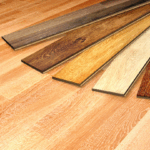 FlooringOctober 25, 2025Best Prefinished Hardwood Species for Durability and Style
FlooringOctober 25, 2025Best Prefinished Hardwood Species for Durability and Style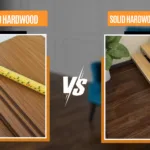 FlooringOctober 20, 2025Comparing Solid Hardwood vs. Engineered Hardwood Options In Store
FlooringOctober 20, 2025Comparing Solid Hardwood vs. Engineered Hardwood Options In Store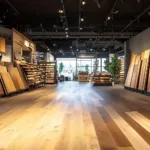 FlooringOctober 19, 2025What to Check Before Buying Wholesale Flooring in Bulk?
FlooringOctober 19, 2025What to Check Before Buying Wholesale Flooring in Bulk?

